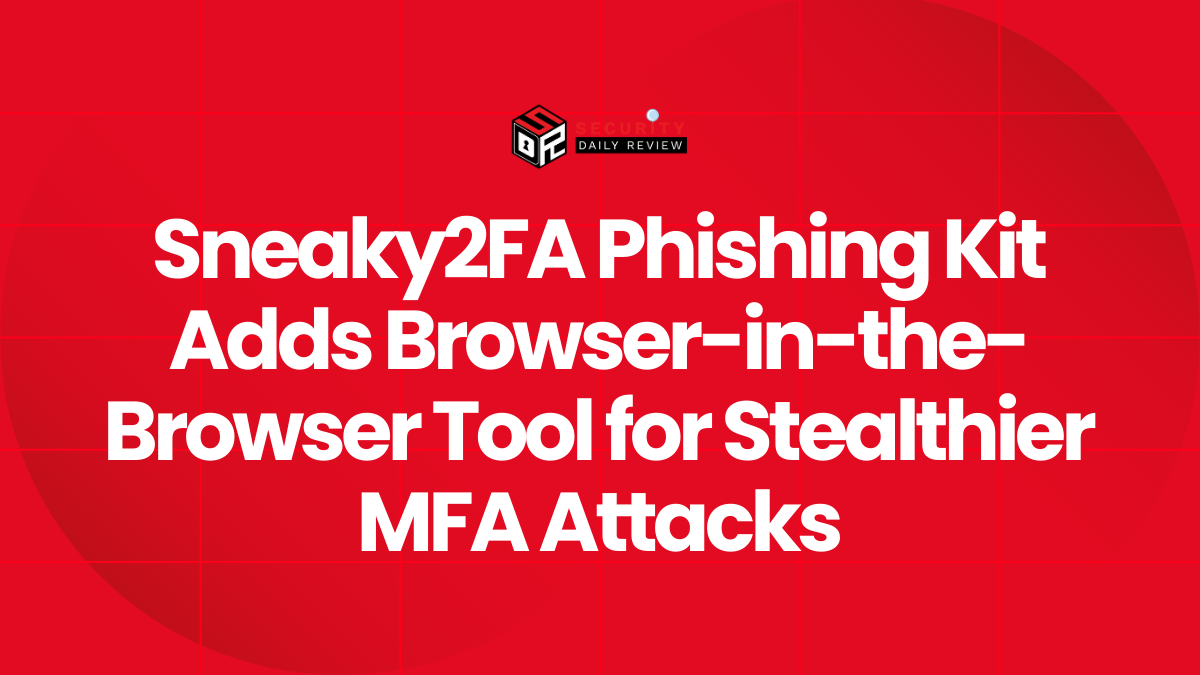A user-friendly phishing-as-a-service (PhaaS) platform known as Sneaky2FA is raising the stakes in credential stealing by incorporating a new feature to thwart multi-factor authentication (MFA). Researchers discovered the kit has adopted a Browser-in-the-Browser (BitB) technique, significantly improving the realism of fake login prompts and giving threat actors a powerful new weapon for credential harvesting.
Phishing-as-a-Service Evolves to Sidestep MFA Security
The addition of BitB capabilities underscores a growing trend in phishing toolkits: adapting attack strategies to bypass MFA protections.
What Sneaky2FA Offers to Cybercriminals
Sneaky2FA, which has long marketed itself as an easy-to-use tool for bypassing MFA, allows its criminal users—or “customers”—to generate customized campaigns that imitate legitimate login portals. Traditionally, attackers would depend on real-time phishing proxies like Evilginx2 to intercept session tokens. Now, with the new BitB module, adversaries can display fully fabricated browser windows that emulate pop-ups from trusted domains, such as Microsoft or Google.
This removes the need for live interaction with the targeted service and cuts down on infrastructure complexity, while retaining the ability to deceive users with precision.
Key features now offered by Sneaky2FA include:
- One-click deployment of realistic fake login prompts
- Browser-in-the-Browser capability for highly convincing overlays
- Support for accessing additional variants via a Telegram channel or Discord server
By adding this BitB feature, Sneaky2FA has slashed the learning curve required to conduct sophisticated phishing operations. Even attackers with minimal technical knowledge can now deliver advanced fake login screens that appear to originate from the user’s local browser, not a separate webpage.
How the BitB Technique Amplifies Phishing Success
The BitB method works by rendering a fake browser window within the actual browser interface. Using HTML, CSS, and JavaScript, attackers fabricate UI elements that mimic trusted service providers, including logos, URLs, and security padlocks. From the victim’s perspective, it looks and acts like a legitimate pop-up authentication request.
This form of phishing excels against targets trained to inspect domain names and authenticity cues. Because the simulated login appears within the flow of their existing session—and may not even trigger a new browser tab—it circumvents many of the verification habits that security-conscious users rely on.
“BitB attacks have become increasingly popular due to their ability to bypass behavioral protections and convince even attentive users,” researchers note.
Sneaky2FA’s support for these techniques brings sophisticated phishing mechanics to a wide audience, potentially magnifying the overall volume of successful credential-theft campaigns across sectors.
Broader Implications for Cyber Defenders
This evolution in phishing tools puts additional pressure on security teams to strengthen user awareness training and deploy phishing-resistant MFA.
Defense Strategies Must Adapt to Sophisticated Social Engineering
Security teams must now contend with phishing kits that emulate browser behavior convincingly enough to fool both non-technical users and seasoned professionals. As BitB tactics become more common, mitigations based solely on awareness and URL inspection are increasingly inadequate.
Organizations are encouraged to:
- Promote the use of phishing-resistant MFA solutions, such as FIDO2 tokens or biometric login
- Employ browser isolation or sandboxing technologies to limit exposure to malicious scripts
- Train users to recognize inconsistencies in login behavior, such as unusual screen formatting or login flows
Phishing Kit Accessibility Lowers Technical Barriers for Threat Actors
One alarming implication of toolkits like Sneaky2FA is the democratization of sophisticated phishing techniques. By packaging advanced tactics into point-and-click interfaces, more threat actors—regardless of skill level—gain access to effective phishing infrastructure.
Additionally, Sneaky2FA’s availability through Telegram and Discord lowers operational hurdles even further. This mirrors similar distribution patterns seen with other PhaaS kits and represents a continued alignment between phishing ecosystems and decentralization trends in cybercrime.
The Emergence of Phishing-as-a-Service Marketplaces
Sneaky2FA is part of a broader ecosystem that enables scalable, subscription-based phishing campaigns mimicking legitimate SaaS (Software-as-a-Service) models.
BitB-enabled phishing kits reflect a paradigm shift in the phishing threat landscape. Rather than relying on individuals developing bespoke phishing frameworks, operators can now subscribe to services that offer turnkey solutions complete with updated templates, support channels, and attack automation.
The addition of BitB techniques into such frameworks suggests that phishing-as-a-service is continuously evolving to undermine security norms. Defender fatigue and trust in even localized browser sessions can quickly become exploitable, widening the footprint of potential victims.
Training and Technology Must Evolve Together
The adoption of Browser-in-the-Browser tactics by phishing kits like Sneaky2FA shows that the line between legitimate and malicious browser interactions is growing increasingly blurred. Organizations must continually evolve their phishing protection strategies and recognize that legacy indicators—such as checking a URL—are no longer sufficient.
Ultimately, the intersection of low-effort deployment and high deception makes Sneaky2FA’s BitB-enhanced attacks a serious concern for corporate and enterprise security alike.









